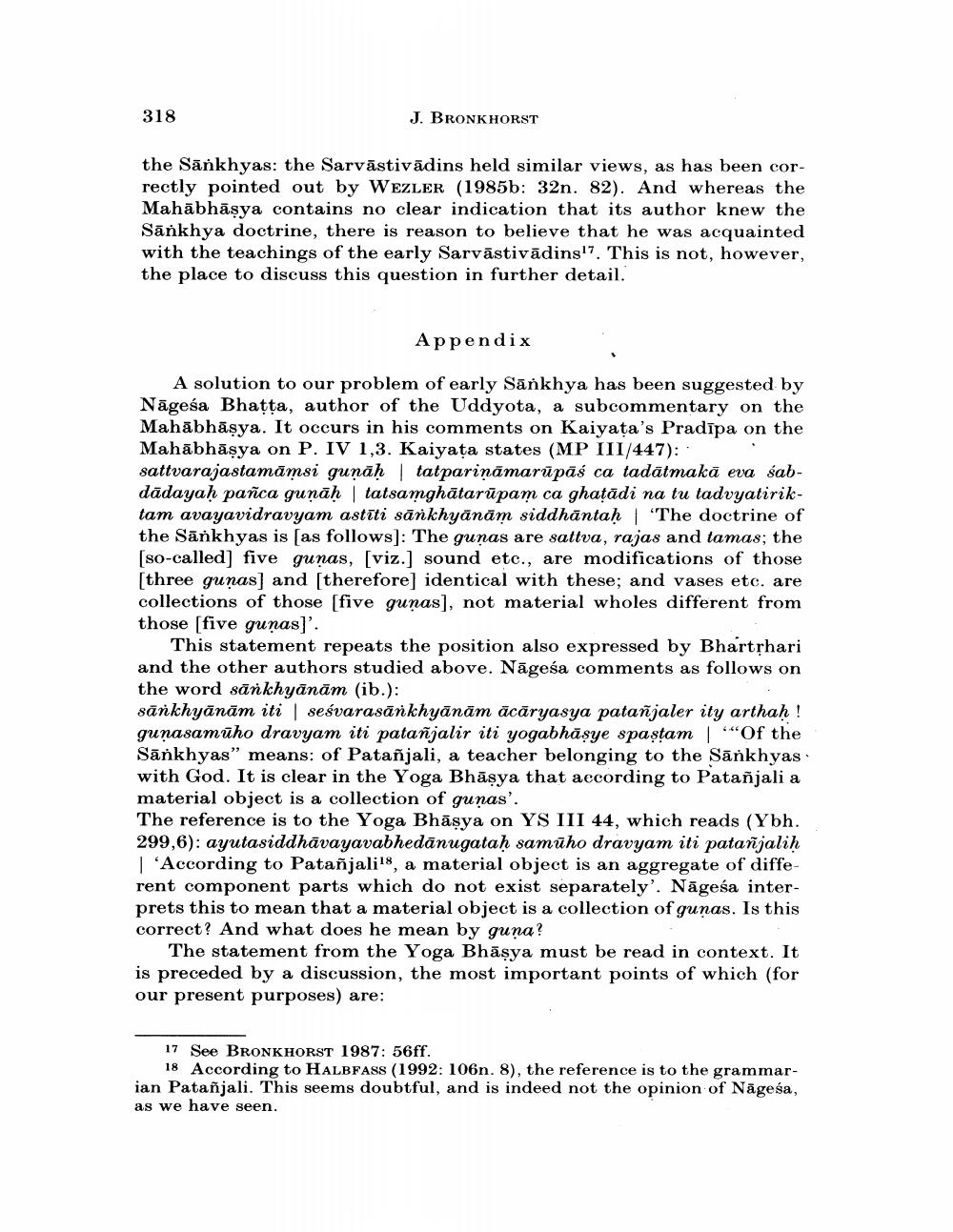________________
318
J. BRONKHORST
the Sānkhyas: the Sarvāstivādins held similar views, as has been correctly pointed out by WEZLER (1985b: 32n. 82). And whereas the Mahābhāsya contains no clear indication that its author knew the Sānkhya doctrine, there is reason to believe that he was acquainted with the teachings of the early Sarvāstivādins17. This is not, however, the place to discuss this question in further detail.
Appendix
A solution to our problem of early Sankhya has been suggested by Nāgesa Bhatta, author of the Uddyota, a subcommentary on the Mahābhāsya. It occurs in his comments on Kaiyata's Pradīpa on the Mahābhāsya on P. IV 1,3. Kaiyata states (MP III/447): sattvarajastamāmsi gunāḥ | tatparināmarūpāś ca tadātmakā eva sabdādayaḥ pañca gunāḥ | tatsamghātarūpam ca ghatādi na tu tadvyatiriktam avayavidravyam astīti sānkhyānām siddhāntah "The doctrine of the Sānkhyas is as follows]: The gunas are sattva, rajas and tamas; the (so-called] five gunas, (viz.) sound etc., are modifications of those [three guņas] and [therefore) identical with these; and vases etc. are collections of those [five gunas), not material wholes different from those [five gunas)'.
This statement repeats the position also expressed by Bhartrhari and the other authors studied above. Nāgesa comments as follows on the word sānkhyānām (ib.): sānkhyānām iti | seśvarasānkhyānām ācāryasya patañjaler ity arthah ! gunasamūho dravyam iti patañjalir iti yogabhāsye spastam “Of the Sānkhyas" means: of Patañjali, a teacher belonging to the Sānkhyas with God. It is clear in the Yoga Bhāsya that according to Patañjali a material object is a collection of gunas'. The reference is to the Yoga Bhāsya on YS III 44, which reads (Ybh. 299,6): ayutasiddhāvayavabhedānugataḥ samāho dravyam iti patañjalih | 'According to Patañjali's, a material object is an aggregate of different component parts which do not exist separately'. Nāgesa interprets this to mean that a material object is a collection of gunas. Is this correct? And what does he mean by guna?
The statement from the Yoga Bhāsya must be read in context. It is preceded by a discussion, the most important points of which (for our present purposes) are:
17 See BRONKHORST 1987: 56ff.
18 According to HALBFASS (1992: 106n. 8), the reference is to the grammarian Patañjali. This seems doubtful, and is indeed not the opinion of Nāgesa, as we have seen.




